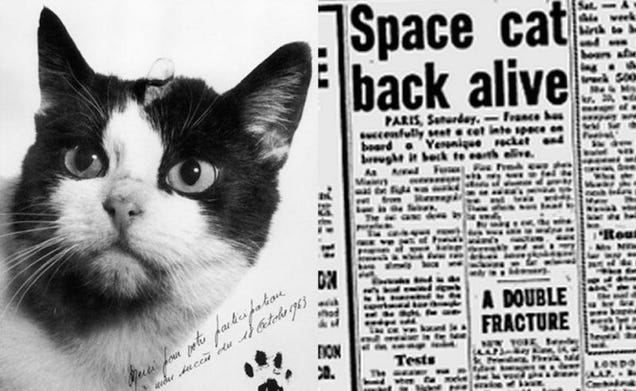
When the world was trying to shoot rockets into space, they ween’t sure what would happen to people if they rode in those rockets. Instead of launching people into orbit initially, countries such as Russia and the United States launched dogs and monkeys into orbit instead. The theory was that if animals could survive in space, then humans could do so as well.
While dogs and monkeys captured the headlines in those early days, France also had a space program. On October 24th, 1963, a tuxedo kitty named Félicette—nicknamed “Astrocat”—flew 130 miles above Earth on a liquid-fueled French Véronique AG1 rocket, soaring high above the Algerian Sahara Desert. She returned just fifteen minutes later, a decorated heroine for her nation.
The next time a country launches a person into orbit, they can partially thank Félicette for her valuable research in studying the effects of orbital travel on living creatures. Perhaps one day someone might send a cat to Mars and then that cat can mark that planet with a paw print as one giant leap for felines.
To read more about the French cat sent into space, click here.
[xyz-ihs snippet=”GoogleHorizontalAd”]
